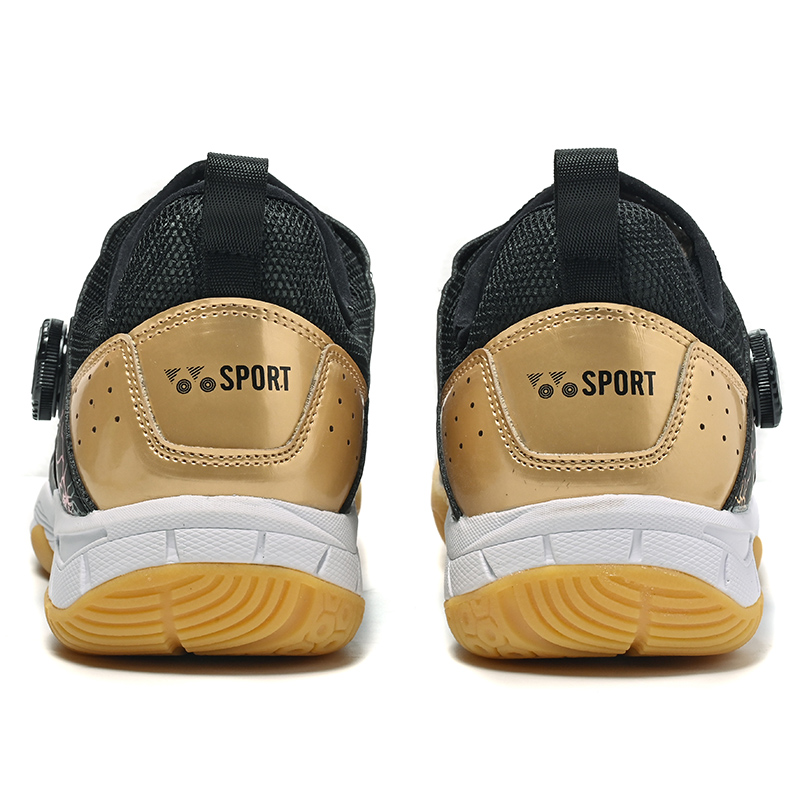
Selecting the right size of pickleball shoes is crucial for optimal performance, comfort, and injury prevention on the court. Ill-fitting shoes can lead to discomfort, blisters, reduced stability, and even long-term foot problems. This essay will explore the importance of proper sizing in pickleball shoes, discussing the impact of improper fit, how to determine the correct size, factors to consider, and the benefits of wearing shoes that fit properly.
I. Impact of Improper Fit: Wearing pickleball shoes that do not fit properly can have various negative consequences:
- Discomfort: Shoes that are too tight or too loose can cause discomfort and pain during play. Improperly fitting shoes can result in pressure points, pinching, or rubbing, leading to blisters, calluses, and general discomfort.
- Lack of Stability: Shoes that are too big or too small can compromise stability on the court. A loose-fitting shoe can cause the foot to slide inside, leading to instability and an increased risk of ankle sprains or twists. Conversely, shoes that are too tight can restrict natural movement and compromise balance.
- Reduced Performance: Ill-fitting shoes can hinder agility, speed, and overall performance. The lack of proper support and stability can impede quick movements and hinder players from reaching their full potential on the court.
- Increased Risk of Injury: Wearing shoes that do not fit properly can increase the risk of various foot and ankle injuries, such as blisters, sprains, strains, or stress fractures. The inadequate support and improper alignment resulting from ill-fitting shoes can place excessive stress on different parts of the foot, leading to overuse injuries.
II. Determining the Correct Size: To ensure proper sizing in pickleball shoes, it is essential to measure your feet accurately. Consider the following steps:
- Measure Both Feet: Feet can vary in size, so it’s important to measure both feet. Stand barefoot on a piece of paper, trace the outline of each foot, and measure the length from the heel to the longest toe.
- Consider Width: In addition to length, pay attention to the width of your feet. Some individuals have narrow or wide feet, which may require specific shoe widths to ensure a proper fit.
- Try on Multiple Sizes: Sizes can vary between shoe brands and models, so it’s crucial to try on multiple sizes to find the best fit. Walk around, wiggle your toes, and assess the overall comfort and support of each shoe.
- Consider Arch Support: Different shoes offer varying levels of arch support. Consider your foot’s arch type (high, medium, or low) and choose shoes that provide appropriate support for your specific needs.
III. Factors to Consider: When determining the correct size of pickleball shoes, consider the following factors:
- Toe Room: There should be enough space in the toe box to allow for natural movement of the toes. A thumb’s width of space between the longest toe and the end of the shoe is a good general guideline.
- Heel Fit: The heel should fit snugly and not slip or lift when walking or running. A secure heel fit provides stability and prevents blisters or discomfort.
- Arch Support: Pickleball shoes should provide adequate arch support based on your foot’s arch type. The arch should be aligned with the shoe’s arch support to prevent excessive pronation or supination, which can lead to discomfort and injuries.
IV. Benefits of Proper Sizing in Pickleball Shoes: Wearing properly fitting pickleball shoes offers several benefits:
- Comfort: Shoes that fit properly provide immediate comfort and reduce the risk of discomfort, chafing, or blisters during play. Comfortable shoes allow players to focus on their game without distractions.
- Stability: Properly fitting shoes offer better stability and balance on the court. A secure and stable fit enhances agility, quick changes in direction, and overall performance.
- Injury Prevention: Well-fitting shoes reduce the risk of foot and ankle injuries. Shoes that provide proper support, alignment, and cushioning help absorb impact and reduce stress on vulnerable areas, minimizing the risk of sprains, strains, or overuse injuries.
- Performance Enhancement: Properly fitting shoes can enhance performance by allowing players to move freely and confidently. With the right fit, players can achieve greater control, agility, and responsiveness on the court.
V. Maintenance and Reevaluation: Proper sizing is not a one-time process; it requires regular evaluation and maintenance. Factors such as weight gain or loss, changes in foot shape, or wear and tear on the shoes can affect the fit over time. Players should regularly reassess their shoe size and consider replacing shoes when they are worn out or no longer provide the proper fit and support.
Conclusion: Proper sizing is critical when selecting pickleball shoes. Ill-fitting shoes can lead to discomfort, instability, reduced performance, and an increased risk of injuries.